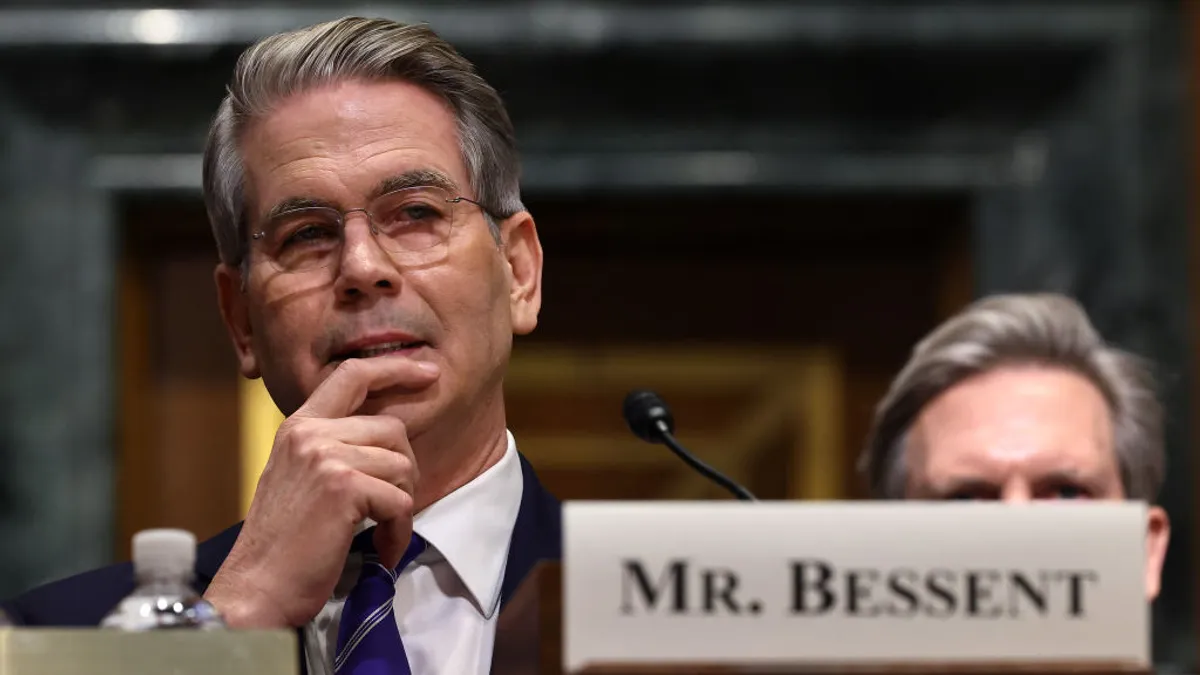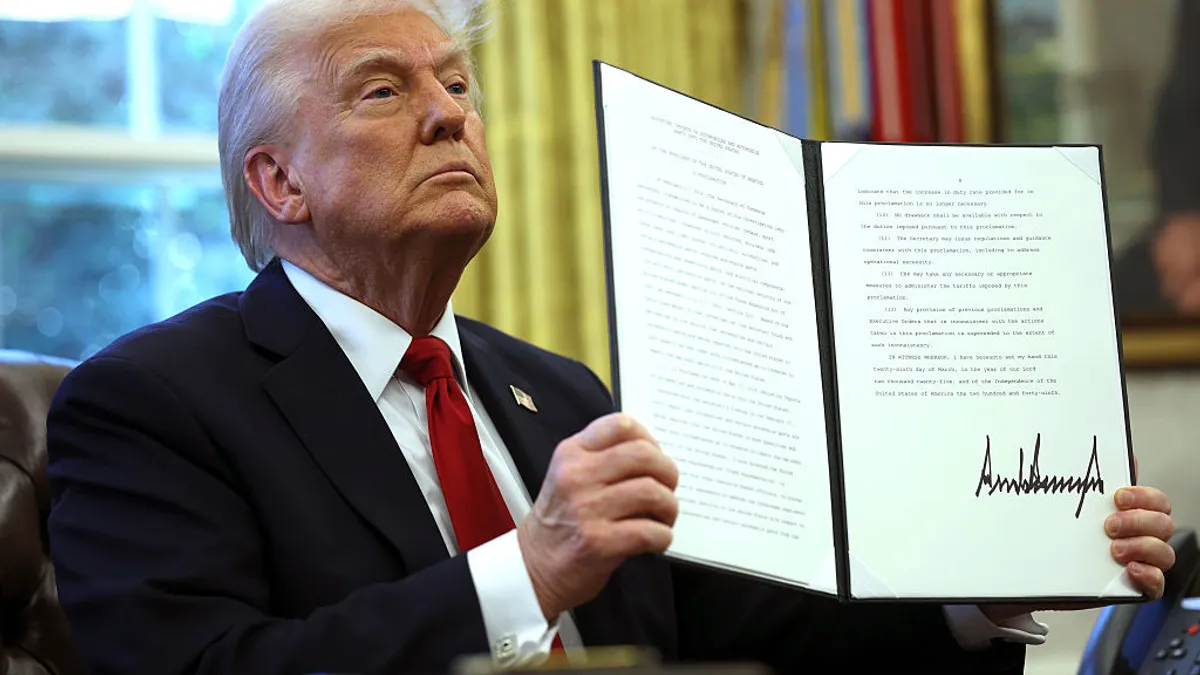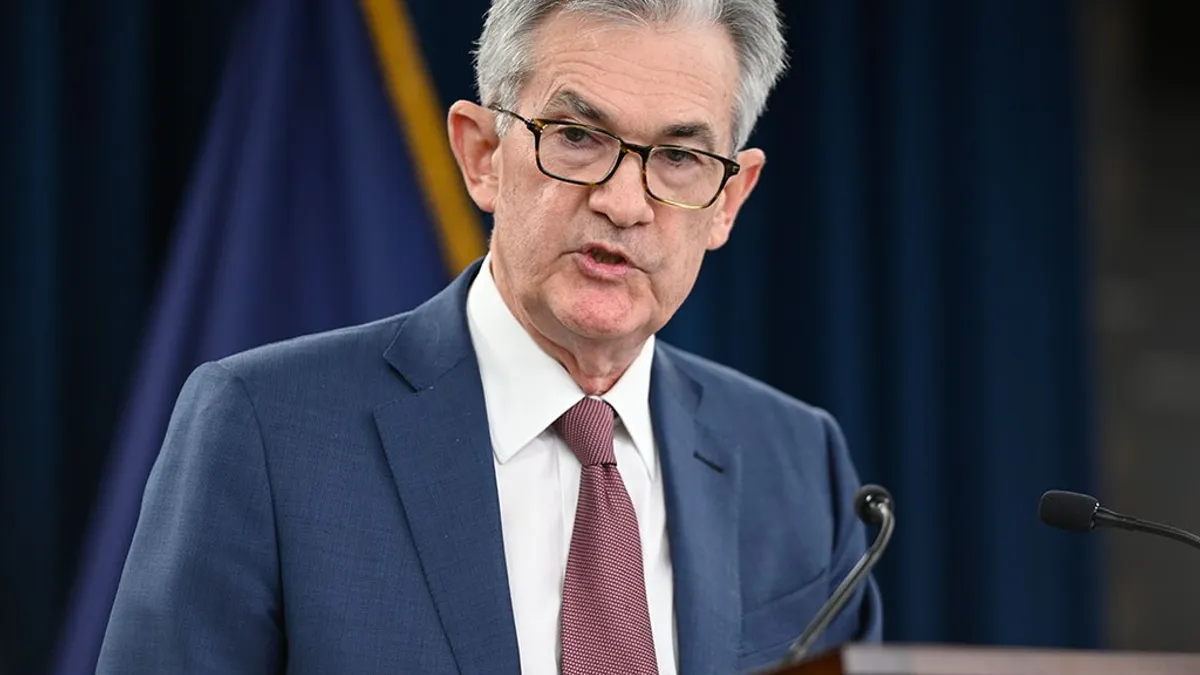The impact of new tariffs imposed by President Donald Trump this week will be “widespread,” affecting many products and industries, according to KPMG’s Andrew Siciliano.
Following Trump’s announcement Wednesday of his sweeping new levies on imported goods, on top of his previous tariff actions, Siciliano offered CFO Dive his view on the best ways to minimize the harm. Options include the “first-sale-for-export” tool, he said.
First sale is an approach that allows importers to declare, for U.S. customs purposes, the transaction value of imported goods based on the initial sale from the manufacturer to an intermediary, rather than the final sale price to the importer. The tool has been a duty-savings mainstay for years, but its popularity “has exploded given the dynamic trade landscape,” according to a KPMG report.
Siciliano, U.S. national practice leader in KPMG’s trade and customs practice, shared his views on the newly reshaped tariff outlook in written responses to emailed questions from CFO Dive’s Maura Webber Sadovi. The exchange has been edited for clarity and brevity.
CFO Dive: What are the major changes today from any tariffs/expectations already set?
Andrew Siciliano: On April 2, President Trump announced a wide-ranging list of “reciprocal tariffs” aimed at addressing trade imbalances and promoting U.S. manufacturing. These measures included a baseline 10% tariff on imports from all countries effective April 5. In addition, for certain nations maintaining significant trade surpluses with the U.S., the rates will be higher such as China (34%), the European Union (20%), and Japan (24%) and will be effective April 9. In addition, once the Secretary of Commerce’s notification that adequate systems are in place to collect tariff revenue, President Trump announced he would end duty-free de minimis treatment for China goods on May 2. Lastly, on April 3, a 25% tariff on imported automobiles will be imposed.

CFO Dive: Which industries/products are most affected?
Andrew Siciliano: Since the tariffs are widespread across many countries, they will impact many products and industries. However, one industry that will be impacted significantly is the textile and apparel industry. Many retailers moved out of China in 2018 once the China 301 tariffs were implemented and moved to counties such as Vietnam (46%), Thailand (36%), India (26%) and Malaysia (24%), which now have high reciprocal tariffs.
CFO Dive: What is the compound/cumulative tariff rate some companies need to calculate and how?
Andrew Siciliano: To first determine the applicable tariff you need to determine the U.S. Harmonized Tariff Code for the product, the Country of Origin and the Value. Once you have those items you can determine the standard duty rate and then assess whether any additional punitive tariffs apply. The additional punitive tariffs can be country based (such as the reciprocal tariffs), or industry product based (automobiles, steel and aluminum). Each tariff rate will be applied individually against the imported goods’ value. This is known as tariff stacking, which is the cumulative application of multiple tariffs on a single product.
CFO Dive: What mitigation steps have worked to date in the Trump administration era, what hasn't?
Andrew Siciliano: Several duty minimization programs such as valuation unbundling, first sale for export and the use of foreign trade zones, can be used to minimize or defer tariffs. Duty Drawback is another popular tariff recovery program but is not permissible for some of the IEPPA tariffs. (It is unknown whether it is allowed for the reciprocal tariffs). What doesn’t work is bifurcating the price and making two separate payments to a seller — one for the goods and one for intellectual property. That will almost always be dutiable, especially if paid to the seller of the goods.
CFO Dive: Is lobbying/negotiating through trade groups something CFOs need to ask their boards to get involved with?
Andrew Siciliano: Yes, CFOs responsible for the financial health and strategic financial planning on behalf of a company should consult with the board when considering actions that could have a significant impact to the company’s operations, costs and competitive position. It’s important to remember that while we don’t know how short or long-term the tariffs will be, speaking up may be beneficial to certain industries.
CFO Dive: How can CFOs keep a lid on costs companies may be facing from legal and consultant fees as they wade through all the changes?
Andrew Siciliano: Not taking the ‘wait and see’ approach but starting early. This may mean engaging a third-party provider to help you integrate tariff mitigation planning and technology — that helps with modeling and scenario planning — into your trade strategy early on. This will help position companies in the long run, to not be unprepared or caught off guard for different outcomes, and/or in a position where they’re scrambling to catch up at the last minute.
Editor’s note: CFO Dive’s Alexei Alexis contributed to this report.






















